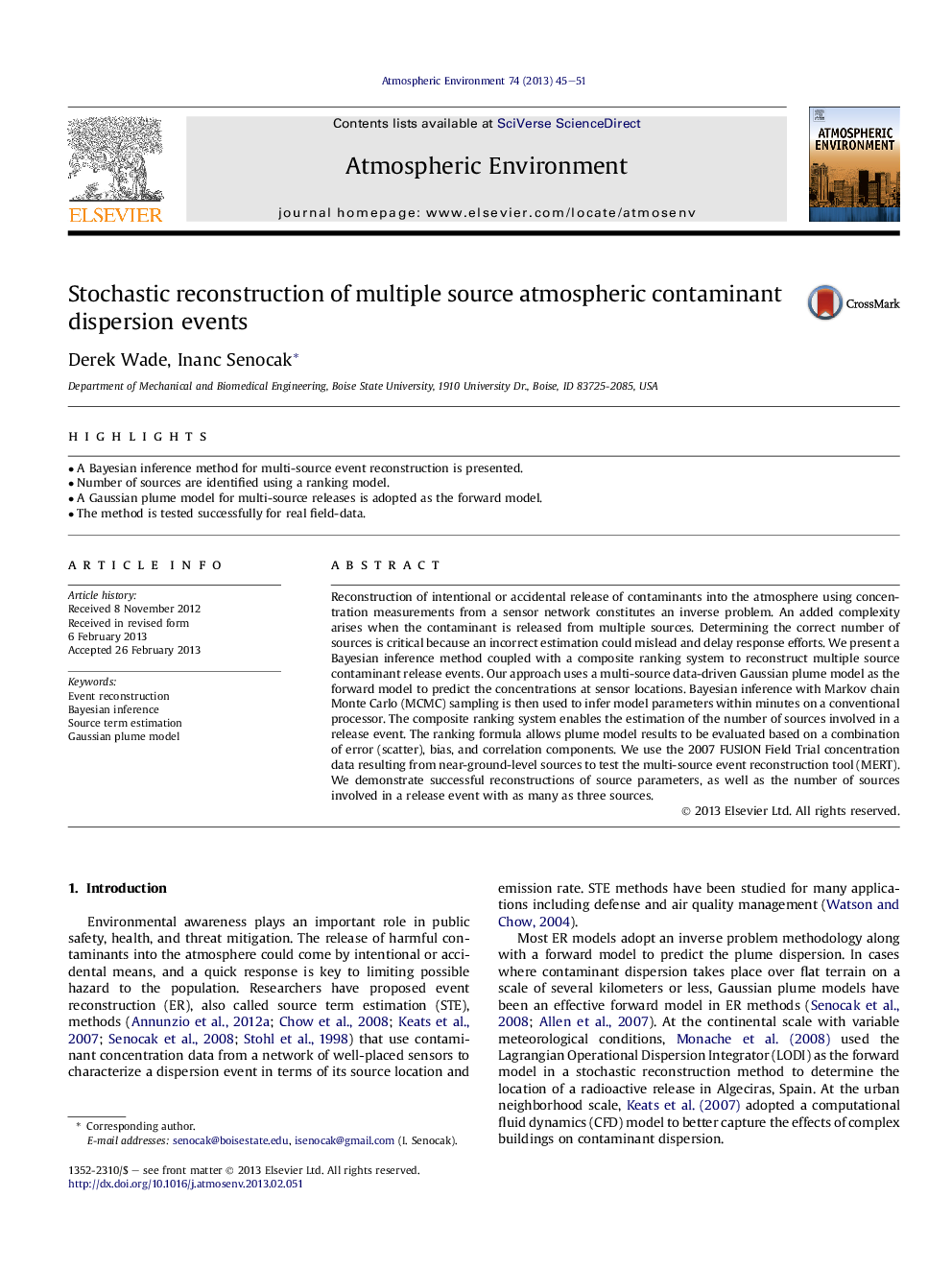| Article ID | Journal | Published Year | Pages | File Type |
|---|---|---|---|---|
| 4438173 | Atmospheric Environment | 2013 | 7 Pages |
•A Bayesian inference method for multi-source event reconstruction is presented.•Number of sources are identified using a ranking model.•A Gaussian plume model for multi-source releases is adopted as the forward model.•The method is tested successfully for real field-data.
Reconstruction of intentional or accidental release of contaminants into the atmosphere using concentration measurements from a sensor network constitutes an inverse problem. An added complexity arises when the contaminant is released from multiple sources. Determining the correct number of sources is critical because an incorrect estimation could mislead and delay response efforts. We present a Bayesian inference method coupled with a composite ranking system to reconstruct multiple source contaminant release events. Our approach uses a multi-source data-driven Gaussian plume model as the forward model to predict the concentrations at sensor locations. Bayesian inference with Markov chain Monte Carlo (MCMC) sampling is then used to infer model parameters within minutes on a conventional processor. The composite ranking system enables the estimation of the number of sources involved in a release event. The ranking formula allows plume model results to be evaluated based on a combination of error (scatter), bias, and correlation components. We use the 2007 FUSION Field Trial concentration data resulting from near-ground-level sources to test the multi-source event reconstruction tool (MERT). We demonstrate successful reconstructions of source parameters, as well as the number of sources involved in a release event with as many as three sources.
